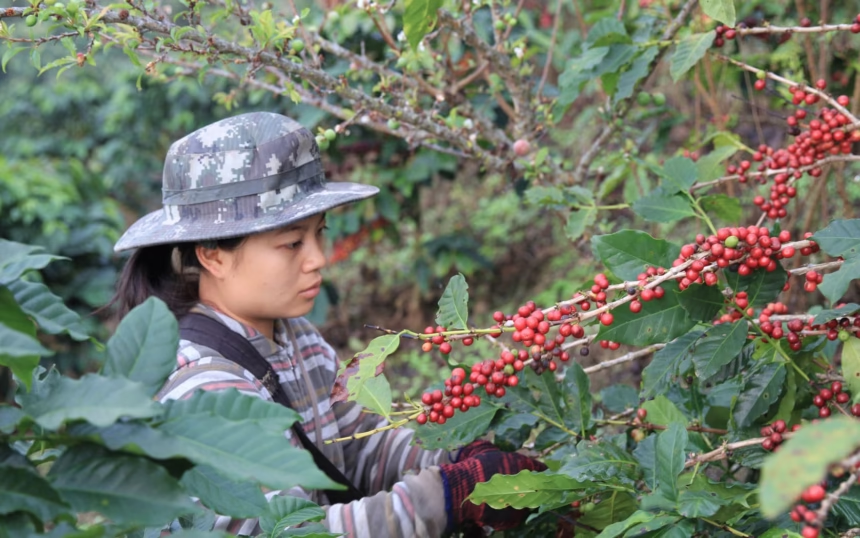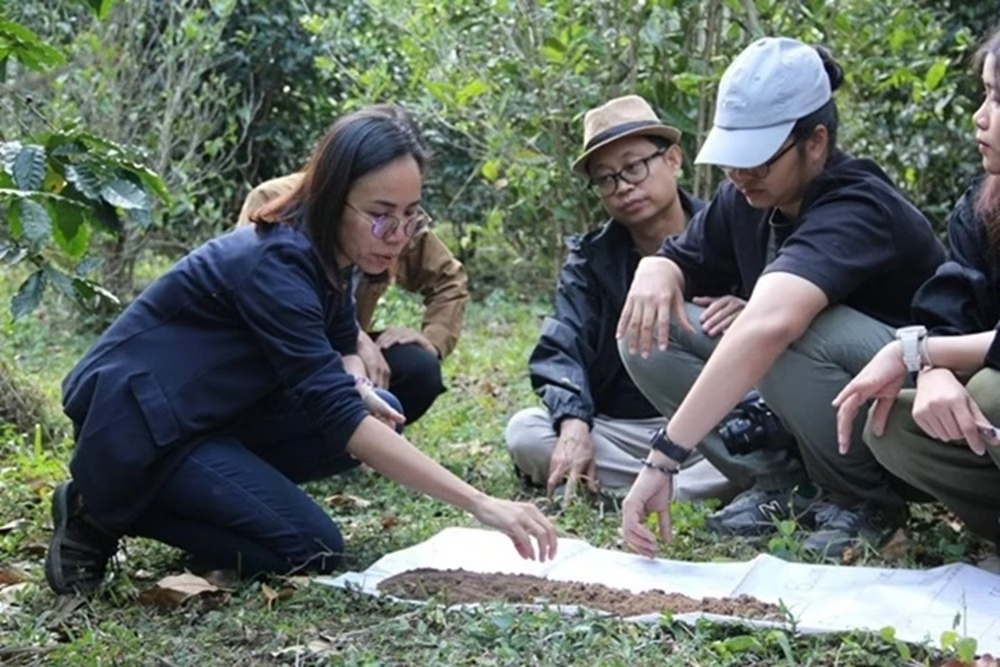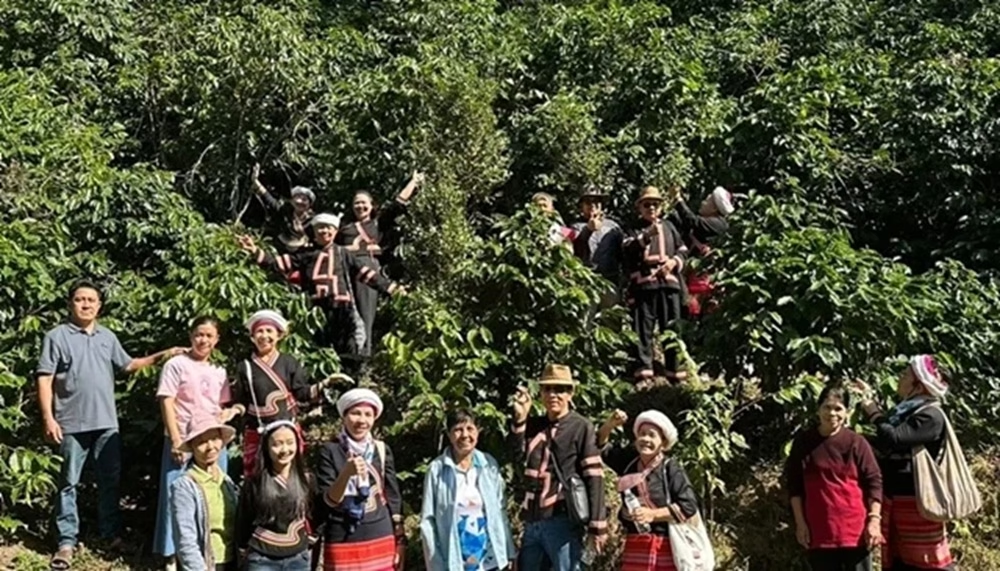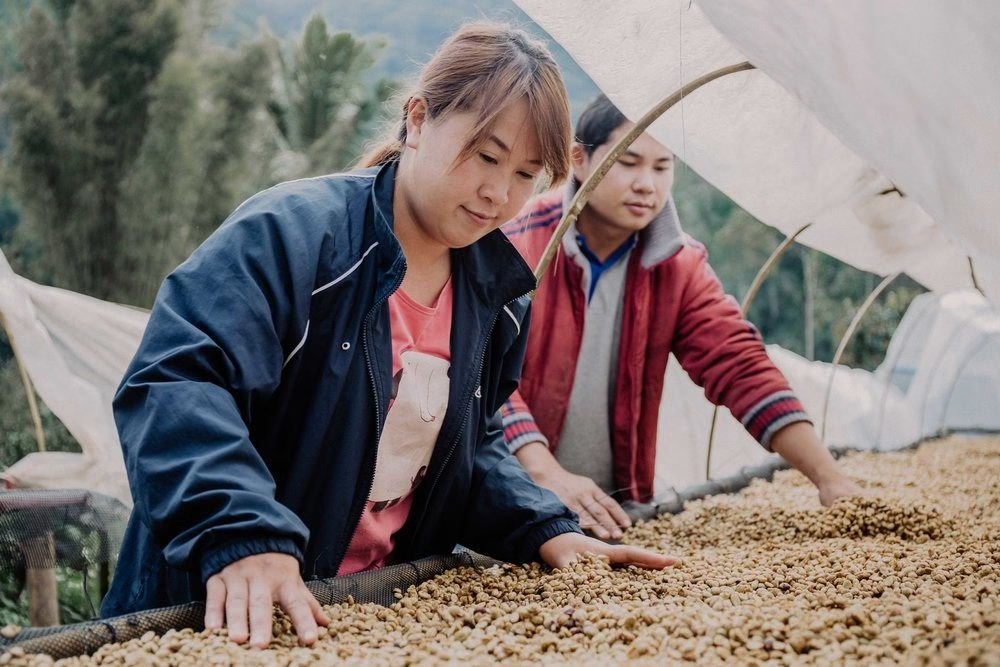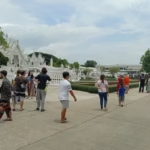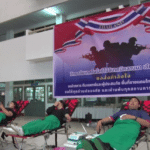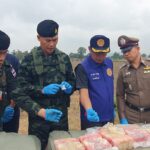CHIANG RAI – The Mae Kuang watershed has long supported coffee-growing communities across the hills of Chiang Rai and Chiang Mai. It covers Mae Chedi in Wiang Pa Pao district (Chiang Rai), and Thepsadet, Pa Miang, Choeng Doi, Luang Nuea, and Sanga Ban in Doi Saket, plus Huai Kaew in Mae On (Chiang Mai).
The area is a key source of Thai Arabica. In recent years, farmers have faced lower yields and poorer quality. Shifting weather patterns linked to ENSO (El Niño and La Niña) and limited access to practical know-how have hit hard. Many growers also lack tools to meet market standards.
Led by Mr. Suriyan Sungkham at the Research and Development Institute, Rajamangala University of Technology Lanna (RMUTL), a team is tackling these issues through on-the-ground work in Chiang Mai and Chiang Rai.
Backed by the Unit for Local Development and Area-Based Funding (NBTC), the project blends appropriate technology and local wisdom. The goal is simple: raise quality across the coffee chain and conserve forest cover in the Mae Kuang headwaters.
The team works through a Learning and Innovation Platform (LIP) that turns data into action.
From Trial and Error to Data-Led Coffee Growing
Ban Huai Nam Kuen in Mae Chedi, Wiang Pa Pao, sits in a crucial headwater zone. Families have grown coffee here for more than 45 years. Recent climate shocks have made traditional methods less reliable.
Many growers rely on habit or neighbour advice, such as using a standard 15-15-15 fertilizer, without soil testing. This guesswork increases costs and misses real nutrient needs, which holds back quality and yield.
The research team partners with the community as equals. The focus is on building skills with simple science and ready-to-use tools, not complex tech. The core principle is data-driven learning that helps farmers connect cause and effect in the field, then adjust in real time.
The approach includes:
- Using data as a practical tool. The team collects and shares plot-level results, like soil tests shown with an easy colour scale (red means high risk). Clear visuals build trust, especially for growers who rely on tradition.
- Learning by doing. Farmers work alongside researchers in demo plots. This shared space helps them observe, compare, and adopt what works. It also builds ownership and pride in the results.
- Regular After Action Reviews (AAR). Farmers review outcomes together, share field conditions, and adjust plans to match what is happening on the ground.
Assistant Professor Wisut Asanawichit, who leads subproject 1, says the data made a real difference. Sticking to the old routine gives the same or worse results. Improving coffee quality matters, but the deeper purpose is to keep Mae Kuang’s forests healthy for future generations.
Building Community Innovators
Beyond data skills, the project invests in “community innovators.” These are growers who can adopt, adapt, and share new practices on their own. Farmers are partners, not passive learners.
The team selects and develops innovators using simple criteria, such as years of specialty coffee experience, cupping ability, willingness to adopt new methods, and readiness to guide others. Innovators are mapped along a pathway from beginner to advanced.
นายภูเมธ ภูมิธันเมธ is a clear example from Ban Huai Nam Kuen. He has reached level four, which means he can receive, adapt, use, and scale new knowledge. He also serves as a local “station lead,” offering hands-on guidance on variety selection, field preparation, and managing pests and diseases.
After developing his cupping skills, he qualified as a Q-Grader. He now gives precise feedback on flavour, defects, and the likely causes in both farm care and processing. His farm has become a living learning centre, with end-to-end tools for producing quality coffee. Visitors can observe the full process on site.
“Joining the project changed how I work and how I support my community. Big data and scientific tools helped me explain coffee production in a clear, structured way. Quality jumped, income became more stable, and I can pass on what I learn. That shared growth is the real value.
It supports long-term change for our economy, our community, and the headwater forests.”
Eight Focus Areas Across the Value Chain
The team targets the full journey from farm to cup, with simple tech that builds on local strengths. Work happens in demo plots with regular follow-ups in eight areas:
- Site-specific soil and water management. Soil tests guide lime use and nutrient plans. This cuts wasteful fertilizer costs, strengthens trees, and improves quality.
- Soil and water conservation in coffee plots. Practices reduce erosion and hold moisture on steep slopes.
- Harvesting only ripe cherries. A colour reference guide helps growers and hired pickers select optimal fruit.
- Specialty processing and cupping. Training covers controlled processing steps and sensory testing to lock in flavour.
- Weather monitoring for farm decisions. Alerts help farmers prepare for disease and pest pressure linked to changing conditions.
- Weather control in drying facilities. Temperature and humidity sensors at four points, plus sound and light alarms, reduce mould risk and keep green bean colour and quality consistent.
- Simple farm accounting. A basic ledger shows real costs and returns, so farmers can price with confidence.
- Brand and identity. Support for brand building and packaging helps tell each farm’s story.
Clear gains in quality and income
Putting these tools to work lifted value at every step. Coffee cherries that once sold for about 25 baht per kilogram now reach 500 baht per kilogram as quality green beans. That is about five to six times above production cost.
Roasted coffee with a farm brand can reach 2,000 baht per kilogram. The team also connects farmers with specialty buyers. In Chiang Mai, a network of tasters and café owners conducts cupping sessions, so buyers taste lots directly. Prices that used to sit in the low hundreds now rise by up to ten times when quality is proven.
Coffee that protects forests
These gains stem from a shared effort. Universities, communities, district agriculture offices, local leaders, municipal bodies, and monks all play a role. Since this is a headwater forest, the community developed the idea of “forest-friendly coffee.”
Growers plant Arabica under shade trees, which encourages them to keep large trees and restore habitat for wildlife. Farmers also maintain their coffee gardens and build small check dams to store water for crops. This holds moisture in the soil and reduces wildfire risk. Coffee quality improves while the forest stays healthy.
“The bonds across the Mae Kuang network are the base of this area-based research. Even as the project phase ends, local momentum continues through relationships and knowledge that now live in the community. The next challenge is scale. We want more farmers to benefit, so the positive results grow across Thailand’s coffee sector,” Mr. Suriyan said.




